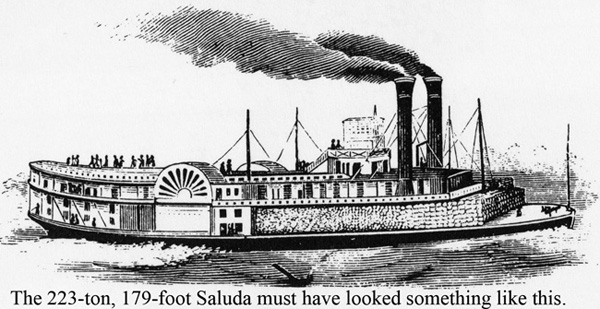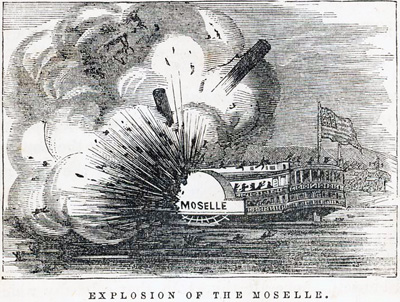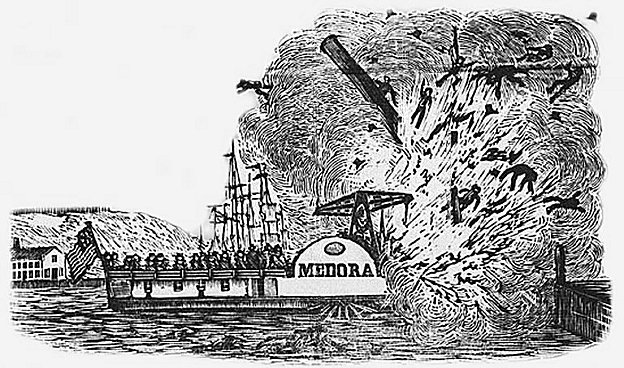The Saluda Explosion
Today, the last day of the Saluda. The University of Houston's College of Engineering presents this series about the machines that make our civilization run, and the people whose ingenuity created them.
It is Good Friday, April 9th, 1852. Six years earlier the Mormons began their emigration to Utah's Great Salt Lake. Four years before, gold was found in California. Now a steady stream of gold seekers and Mormon converts travels up the Missouri River on the first stage of their way west.
The town of Lexington, Missouri, forty miles east of Kansas City, is a way station on this journey. In March, a sailing ship from England left 333 Mormon pilgrims in New Orleans and a steamboat carried them up the Mississippi to St. Louis. About a hundred of them, short of funds, hurried on to Lexington in the hope of boarding another boat to Council Bluffs -- as soon as possible. That's where they'll pick up a wagon train to Salt Lake City.
Their only hope for a quick departure is a boat called the Saluda. It's six years old, where the average age of steamboats is more like three. Steamboats often hit snags, sink, or go aground. Boilers explode. The Saluda had been half sunk on a sandbar for a while. Now it's patched back together and looking pretty tacky. Worse yet, the river this spring is swollen and it still carries ice.

But neither the Mormons nor the gold seekers can afford to wait. An unknown number of both, maybe as many as 175, book passage on the Saluda. Then another problem arises: Just west of Lexington, the water accelerates around a bend. The Saluda has tried to get upstream and been unable to buck the flow.
This morning the River is free of ice and Captain Francis Belt (who is co-owner of the boat) is determined to make it around the bend and get underway. He calls for maximum boiler pressure; then he's overheard shouting to another steamboat captain, "I will round the point this morning or blow this boat to hell!"
Well, that cry could rightly have echoed in ears of the Titanic's captain sixty years later. For that's precisely what happened. Belt ran the boilers up and, before the Saluda left the dock, they erupted, creating the worst steamboat disaster we'd known.
People on the wharf watched bodies flying through the air. The body of captain Belt, last seen standing on the roof of the boat, was found on the far side of a dock warehouse. Most of the passengers, and some bystanders, died.
Bad as that was, only six days earlier another steamboat, the Glencoe, had exploded back in St. Louis killing almost as many people. Congress was in the final stages of creating a system of steamboat inspections. But that wouldn't have saved the Saluda or the Glencoe. It was years before the system ran smoothly. So those killing explosions went on for a long time.
A junk dealer found the Saluda's bell and sold it to a church in Savannah, Missouri. You can see it there (or see a replica at a Lexington memorial). But memorials fade against the vast tapestry of steamboat disasters. So many blew up and any one seems small in comparison with the pervasive horrors of early river traffic.
I'm John Lienhard at the University of Houston, where we're interested in the way inventive minds work.
Wikipedia offers a short Saluda article. All images are clipart images from the 19th century.
More period explosions ...

